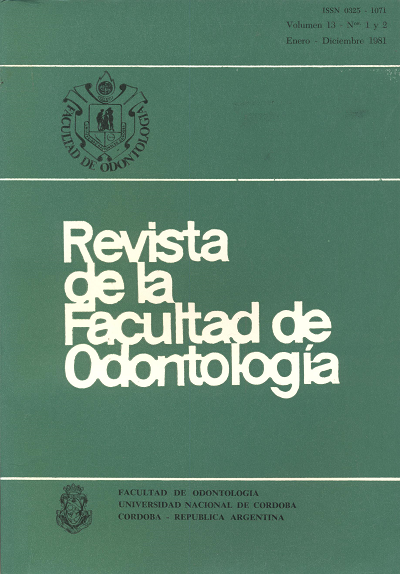Efecto del tamoxifen sobre la glandula sublingual y submaxilar de la rata
Keywords:
Tamoxifeno, Glándula Sublingual, Glándula SubmaxilarAbstract
This study \vas performed to determine the histomorphological effects
of tamoxifen (a nonsteroid antioestrocren) in rat sumaxillary and sublingual
glands.
Forty vVistar rats, young adults, males and females, were used in the
study. The animals were divided. in the follow:ing groups: 1) Normal control
2) Castrated 15 days 'befare the beginning of the study, 3) Inyected
witb tamoxifen durir!g 15 days, 4) Castrated and injected with tamoxifen
during 15 days. .
The animals were killed \vith an overdose of ether, and submaxillary
and sublingual glmids were removed .
A morphological study of salivary glands was performed, using sections
stained with H. E. The histochernical reactions used were: PAS, AB pH 1 and
2.5, both in combination \vith P AS.
The sublingml glands of the anin1als receiving tamoxifen lost SeJ,."U::ll
dimOr[lhism, the parenchyma became very compact, but lhis characteristic
was nor obwrved when castrated. Castration didn't increas.;: or decrease the
drug's effect over either sex. ·
In submaxillary glands tamoxifen changed their sexual dirnosphism and
the adni secretion, affected males and females bnt when they were exposed
both to t11e drug and castration, females showed more intense differences Íl•
the achlis ( accord:ng to lustometric results) .
Conclusions tamoxifen has an evideut effect en sublingual and submaxiUary
glands. It is suggested then, that this could result from the possibk
presence of specific estrogen receptors in these glands, which wold be blocked
by tamoxifen.
Downloads
Published
Issue
Section
License
Aquellos autores/as que tengan publicaciones con esta revista, aceptan los términos siguientes:
- Los autores/as conservarán sus derechos de autor y garantizarán a la revista el derecho de primera publicación de su obra, el cuál estará simultáneamente sujeto a la Licencia de reconocimiento de Creative Commons que permite a terceros:
- Compartir — copiar y redistribuir el material en cualquier medio o formato
- La licenciante no puede revocar estas libertades en tanto usted siga los términos de la licencia
- Los autores/as podrán adoptar otros acuerdos de licencia no exclusiva de distribución de la versión de la obra publicada (p. ej.: depositarla en un archivo telemático institucional o publicarla en un volumen monográfico) siempre que se indique la publicación inicial en esta revista.
- Se permite y recomienda a los autores/as difundir su obra a través de Internet (p. ej.: en archivos telemáticos institucionales o en su página web) después del su publicación en la revista, lo cual puede producir intercambios interesantes y aumentar las citas de la obra publicada. (Véase El efecto del acceso abierto).

